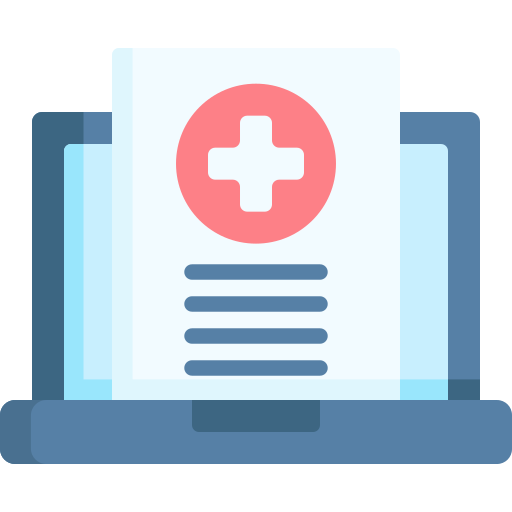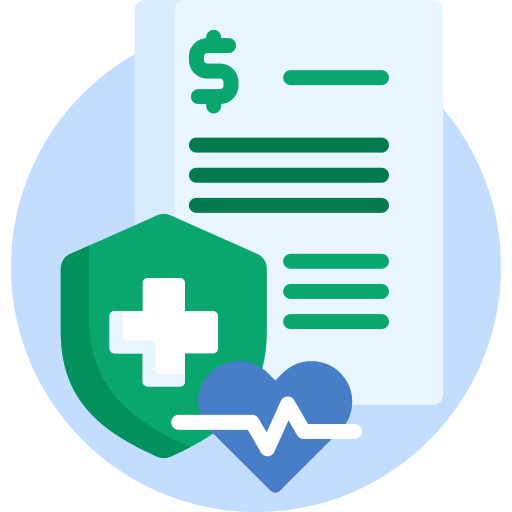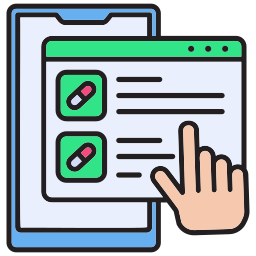Accurate clinical notes are essential for delivering high-quality patient care and facilitating smooth claim processing. Clinical documentation serves as the foundation of healthcare communication, providing a clear and detailed account of who the patient is, what care they received, and why certain treatments were administered.
This level of precision supports seamless collaboration among healthcare providers and ensures patients receive the appropriate services. The integrity of the healthcare system and better patient outcomes ultimately depend on properly maintained documents.
The U.S. clinical notes market, valued at USD 1.23 billion in 2023, is expected to reach USD 2.19 billion by 2034, growing at a CAGR of 8.14%.
Beyond financial implications, accurate clinical documentation directly impacts patient safety. A missing or illegible entry in a patient's file can lead to serious medical errors, such as incorrect treatments or medications. These mistakes can jeopardize patient health and undermine the trust between patients and providers.
As Louis Blank from the Centers for Medicare and Medicaid Services emphasized, "Proper documentation is a sound way to protect the financial health and sustainability of your facility or practice."
Properly documenting the medical necessity of services and ensuring accuracy in coding can reduce claim denials and prevent care-related errors. Ultimately, thorough and precise documentation plays a critical role in maintaining both the clinical and financial health of healthcare practices.
Let’s get to know how we can utilize the EHR for taking clinical notes.
Benefits of Clinical Notes in EHR
EHR systems further simplify the documentation process by enabling voice notes, allowing clinicians to dictate their clinical notes instead of manually typing them. This feature reduces the time spent on documentation while improving accuracy, as spoken entries are immediately transcribed into the EHR.

✅ Streamlined Note-Taking Process
EHR systems integrated with voice-to-text tools and AI can reduce the time required for documentation, allowing clinicians to focus more on patient care. These systems capture real-time data with minimal manual effort, ensuring accurate and up-to-date information in patient records. By automating aspects of clinical documentation, healthcare providers can enhance their efficiency and accuracy, enabling faster decision-making and improving overall workflow. Moreover, this process minimizes documentation errors, leading to better care continuity and coordination across healthcare teams.
✅ Utilize Custom Templates for Specialties
Specialty-specific templates in EHR systems ensure that documentation aligns with industry protocols and covers all necessary information. By using templates designed for particular medical fields, clinicians can quickly record relevant data, ensuring no critical information is omitted. These templates promote compliance with standards while simplifying documentation, reducing cognitive load on healthcare providers. Additionally, they allow for faster access to essential data points, improving patient care and operational efficiency. Custom templates help streamline billing processes by capturing all required information for reimbursements.
✅ Improve Data Accessibility and Sharing
EHR systems centralize patient data, making it easily accessible to all authorized healthcare providers involved in a patient's care. This improves communication across different departments and providers, reducing the chances of errors and ensuring that every team member has up-to-date information. Clinical notes are immediately shareable, which facilitates better coordination during patient transfers, consultations, or multi-disciplinary care. The ability to access and update clinical notes in real-time supports more effective decision-making, ultimately leading to improved healthcare outcomes and more efficient care delivery.
✅ Regular Updates and Training on Best EHR Practices
Continuous education on the latest EHR practices and regular updates to clinical documentation systems help maintain high efficiency and accuracy in healthcare settings. Training ensures clinicians stay adept at using new tools and techniques for documentation, improving the quality of patient care. Regular updates to the system, such as template enhancements and feature optimizations, ensure that the workflow remains aligned with best practices. It aids compliance with evolving regulations and enhances the user experience, reducing the likelihood of burnout caused by inefficient systems.
Specific Features and Techniques for Clinical Notes in EHR
Let’s explore key features and techniques to streamline clinical note-taking in EHR systems:
📃 Template-Based Clinical Notes
Templates standardize the format of clinical notes, reducing the time healthcare providers spend on documentation. These pre-designed templates ensure essential sections, such as patient history, treatment plans, and observations, are systematically recorded. This standardization improves data quality, reduces omissions, and supports compliance with regulations. Additionally, it helps generate uniform clinical reports that can be reused for administrative tasks, audits, and research. By streamlining the process, templates allow healthcare providers to focus more on patient care rather than tedious data entry tasks.
📃 Voice Recognition Software
Voice-to-text technology allows healthcare providers to dictate their clinical notes, transforming spoken words into written records. This method reduces the time spent, and typing decreases the chances of errors during transcription. By enabling real-time note creation, voice recognition software ensures that clinical documentation is accurate and up-to-date. The ease of recording information through speech allows providers to capture detailed patient interactions, improving the quality and comprehensiveness of clinical records.

📃 Natural Language Processing (NLP)
Natural Language Processing (NLP) automates parts of clinical note-writing by analyzing and interpreting human language. NLP can extract key findings, generate summaries, and even identify patterns in patient data. This technology enhances EHRs by making it easier for providers to find critical information quickly without manually sifting through large volumes of text. By automating routine tasks, NLP reduces the cognitive load on clinicians, improves decision-making, and supports data-driven care. It facilitates data reuse for research and reporting, ensuring clinical notes contribute to broader healthcare goals.
Related Read: Large Language Models: Complete Guide for 2024
📃 Smart Formatting and Auto-Completion
Smart formatting features in EHRs help clinicians by automatically formatting text and suggesting relevant medical terms based on the note context. These auto-completion tools reduce the time needed for documentation and help clinicians write more precise notes. Such features minimize manual entry errors and ensure consistency across clinical records by suggesting frequently used medical phrases and diagnostic codes. In addition, auto-completion speeds up the documentation process, making it easier for healthcare providers to maintain detailed and accurate records without sacrificing time spent on patient care.
📃 Integration with Other Systems
EHRs that integrate with other healthcare systems, such as laboratory and imaging systems like the OCR system, allow seamless access to test results and diagnostic images directly within the clinical notes. This integration reduces manual data entry and minimizes the risk of errors by ensuring that accurate information is pulled automatically into the patient’s records. Additionally, it supports continuity of care by allowing healthcare providers to review comprehensive patient data in one place, enabling faster and more informed decision-making. Streamlined integration improves the overall efficiency of clinical workflows.
Related Read: The Future of Interoperability in Healthcare
📃 Mobile EHRs and Remote Access
The availability of mobile EHRs provides healthcare providers with remote access to clinical notes and patient data, enhancing care in ambulatory or home healthcare settings. Mobile EHRs allow clinicians to document patient encounters in real-time, regardless of their location, ensuring timely and accurate information capture. This flexibility enables providers to review patient records on the go, improving the quality of care in emergency or field settings. It can access and update records remotely, which enhances communication and coordination among healthcare teams, leading to better patient outcomes.
How HealthConnect CoPilot Can Help You with Integrating Clinical Notes in EHR?
Clinical notes play an important role in EHR systems, as they serve to document patient interactions and support various clinical, administrative, and legal processes. The shift towards digital clinical documentation aims to improve the accessibility, usability, and clinical decision-making of patient information across healthcare settings. Key techniques like template-based notes, voice recognition software, and natural language processing (NLP) streamline documentation while ensuring accuracy and consistency. These advancements ease the burden of manual data entry and facilitate the reuse of structured data for research, billing, and care coordination.
HealthConnect CoPilot can help to build and integrate clinical notes efficiently into EHR systems. By providing options for using customizable templates and supporting voice recognition, we simplify the documentation process, allowing healthcare providers to record patient interactions faster while maintaining high accuracy.
We can help you integrate with other healthcare systems, such as lab and imaging data, allowing clinical notes to be enriched with essential patient information from various sources. This integration improves the completeness of patient records and enables healthcare providers to access and utilize comprehensive data across different points of care, improving the overall care delivery process.
- How can templates help improve the efficiency of writing clinical notes in EHR?
Templates provide a structured format for documenting common clinical encounters, reducing the need for repetitive typing. By using customizable templates, healthcare providers can quickly fill in the necessary details, ensuring that important information is captured consistently and efficiently.
- Can voice recognition software speed up the process of writing clinical notes?
Yes, voice recognition software allows healthcare providers to dictate their notes instead of manually typing them. This can significantly reduce the time spent on documentation while minimizing typing errors, improving overall efficiency.
- What role does Natural Language Processing (NLP) play in improving clinical note efficiency?
NLP helps automate the process of note-taking by identifying key medical terms, summarizing clinical findings, and suggesting relevant content. This can help reduce the amount of time spent on reviewing and editing notes, enabling faster completion of documentation.
- How can integration with other healthcare systems improve the efficiency of writing clinical notes?
Integration with systems like laboratory and imaging services allows clinical notes to automatically pull in relevant patient data. This reduces the need for manual data entry and ensures that all necessary information is readily available, improving the efficiency of note-writing.
- What are some best practices to follow for maintaining efficiency while writing clinical notes?
Using pre-configured templates, leveraging auto-completion features, and organizing documentation workflows around clinical encounters are key best practices. Additionally, minimizing distractions during note-taking and staying updated on EHR system features can further improve efficiency.

Pravin Uttarwar, CTO of Mindbowser
As the CTO of Mindbowser, a healthcare-focused software development company, I am dedicated to delivering cutting-edge digital solutions that transform patient care and operational efficiency. With over 16 years of experience and as an MIT alumnus, I specialize in healthcare interoperability, FHIR-compliant systems, and AI-powered platforms, crafting scalable products and architectures tailored to the unique needs of healthcare providers and enterprises.
I have spearheaded the development of over 100 products and platforms, guiding them from concept to full-fledged solutions. My expertise extends to scaling remote tech teams, driving EHR integrations, and building secure, cloud-native healthcare solutions. By shaping technology visions and roadmaps, I help clients achieve long-term growth and success in the rapidly evolving healthcare landscape.
HealthConnect CoPilot enabled us to access real-time patient health data through integration with Apple HealthKit, enhancing care delivery while maintaining HIPAA compliance. This led to personalized care and improved outcomes for patients.

AI-enhanced Obstetrics Clinical Decision Support Platform
HealthConnect CoPilot's integration with Epic's Hyperspace has transformed our workflow. Automated post-delivery examinations and HL7 protocol use ensure accurate updates to Epic. Their expertise empowers informed decision-making in childbirth

Top Provider for Customized Healthcare Solutions
HealthConnect CoPilot's helped us to integrate with leading tracking devices such as Apple Watches and Fitbit. This integration enables effortless syncing of health data, providing users with real-time insights displayed directly on our flagship products: smart mirrors and digital calendars.

A Provider of Customizable Display Solutions
Post a comment Cancel reply
Related Posts
Ambulatory EHR vs Inpatient EHR: Which One is Right for Your Practice?
EHRs help doctors and healthcare staff store, access, and manage patient information digitally. They improve…
Ambulatory EHR: A Complete Guide for Healthcare Providers
Healthcare providers are moving beyond paper records and legacy systems, and ambulatory EHRs are leading…
Epic Integration with SMART on FHIR: A Complete Guide
The challenge of integrating AI-driven tools and third-party applications with Epic’s EHR system has long…
Epic EHR Integration – Unlocking Seamless Healthcare Connectivity
The EHR integration has revolutionized healthcare by enabling secure, real-time access to patient data. Epic…
Epic FHIR Integration: Making Interoperability Seamless for Healthcare Providers
Healthcare systems generate massive amounts of patient data daily, but without Epic FHIR integration, this…
Epic EHR Explained: How It Transforms Healthcare Operations and Patient Care
Epic EHR has become a cornerstone of modern healthcare, providing hospitals and clinics with a…










